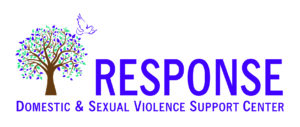Plan for Your Safety
You are never to blame for the abusive actions of others. There are several steps that can be taken to protect yourself to provide a long-term path to safety. You know your situation better than anyone else; trust your judgement and weigh your options before taking any steps. Advocates are available to safety plan with you.
Things to take if you decide to leave
- money, bank card, passwords
- identification (yours and your children’s): birth certificate, driver’s license, social security card, passport, green card, public assistance ID, work permit
- order of protection: temporary or final restraining order
- all court documents
- lease, rental agreement, house deed
- insurance papers/cards: life, auto, health, home
- cellphone/charger
- school records
- clothing
- keys: house and car
- medications
- baby supplies
- comfort items (favorite stuffed animal or photo)
Personal Safety during an abusive incident
If an argument seems unavoidable, move to a room or area with easy access to an exit. Most bathrooms and bedrooms do not have a door out of the house or apartment. Move to an area away from any weapons (guns, knives, or other weapons).
Practice your escape. Identify which door, window, stairwell, or elevator is the quickest way out of the home from each room.
Have a bag packed and ready. Keep it in a private but accessible place where you can retrieve it quickly.
Find neighbors you can talk about your situation and ask that they call the police if they hear a disturbance. Set up a code with them (call the police if the porch light flashes or I pull my shades down during the day).
Devise a code word to use with your friends, children, family, and co-workers when you need the police.
Plan where you will go if you decide to leave. Even if you don’t think you will.
Use your instincts and judgment. If someone’s behavior causes you to be fearful for your safety, trust that you know what is best for you. Protect yourself.
